NVIDIA GeForce RTX 4090 Graphics Card Review
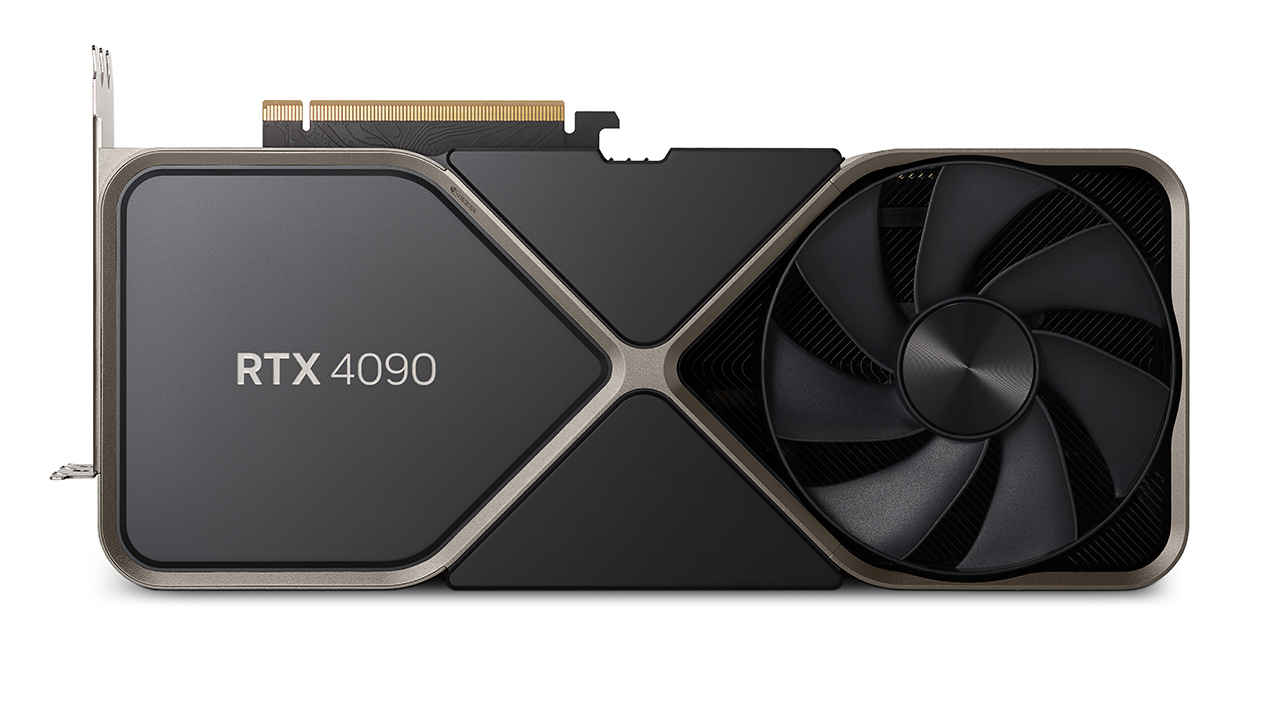
- Tremendous boost in performance
- 24 GB GDDR6X VRAM
- Ridiculously expensive
- Very bulky
The RTX 4090 takes one massive leap in performance from all the 1080p benchmarks that we have run thus far. We’re still reserving judgement regarding the 1440p and 4K gaming performance but from what we’ve seen thus far, it seems like the RTX 4090 will have a similarly impressive performance gap over the previous gen GPUs.
NVIDIA RTX 40-series graphics cards are finally here. Powered by NVIDIA Ada architecture, successor to their Ampere architecture, boasts of much higher performance across the board. Be it ray-tracing, raster graphics or AI, the new NVIDIA RTX 40 cards are poised to completely shatter all benchmarks. Whether they do that, is something we’ll see.

Specifications
NVIDIA is kicking off the launch with the high-end GPUs first and the RTX 4090 is leading the pack with a massive GPU at the heart of the graphics card. The AD102 GPU is 608mm2 in size which is a little smaller than the GA102 Ampere GPU that powered the RTX 3090 Ti. Shifting from Samsung 8nm to the much more efficient TSMC N5 node has certainly helped reduce the size while squeezing in a lot more transistors. The 628mm2 GA102 has 28.3 billion transistors whereas the AD102 has 76.3 billion transistors. Speaking of the process node, is it really 4nm or 5nm? Well, let’s remind everyone that the numbers no longer have any technical link to the process nodes. They’re simply marketing nomenclature. None of the transistors are actually 4nm or 5nm in size. As for the NVIDIA RTX 40-series cards, the GPUs are built on a tweaked version of the TSMC N5 node which is being termed as “4N”. The next TSMC node after N5 is actually N3 and that’s still some time away from entering mass production.
Coming back to the GPU at hand. The AD102 has 16384 CUDA cores, 512 Texture Mapping Units, 176 Render Units, 512 Tensor Cores and 129 Ray Tracing cores spread across 128 Streaming Multiprocessors. These 3rd Gen RT cores offer up to 2x ray tracing performance and the Tensor Cores, which are now 4th Gen, offer 2x the AI performance as previous cores. This means that the ray tracing performance is being augmented by an equally significant DLSS performance uptick which is driven by the AI cores in the GPU. Also, NVIDIA has added AV1 decoders in these new GPUs. This is a significant change since most hardware only featured AV1 decode capabilities despite the open-source video encoding standard having been around for quite some time.
Build
Despite the ridiculous number of transistors being packed into the AD102 GPU, the RTX 4090 has been designed for a TGP of 450 Watts. While keeping it the same as the previous gen RTX 3090 Ti is a commendable task, it still is a lot of power. And the size of the GPU reminds you of that fact. The RTX 4090 is a beast of a GPU measuring at 304mm x 137 mm x 61 mm.
The look of the RTX 40-series graphics cards is very similar to the RTX 30-series cards. You’ve got the matte black body with a metallic ‘X’ pattern in the front with black heatsink fins making up most of the body.
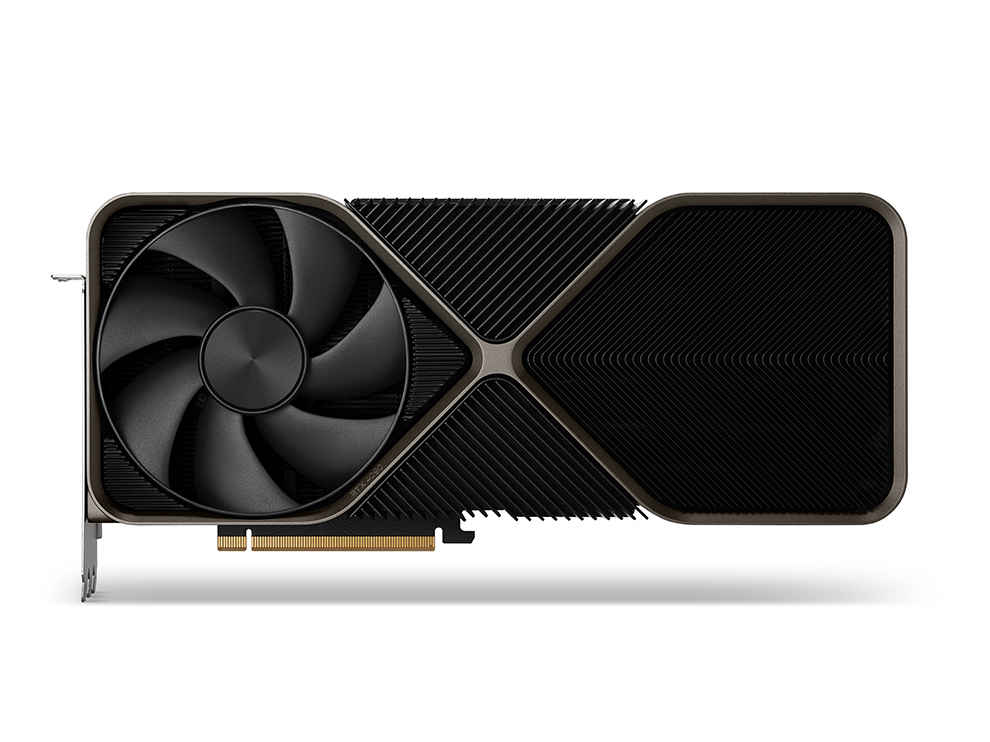
The rear continues to have a backplate with an inlay of the model name – “RTX 4090”. The ‘X’ in the centre extends to wrap around the body and forms the sides of the GPU.
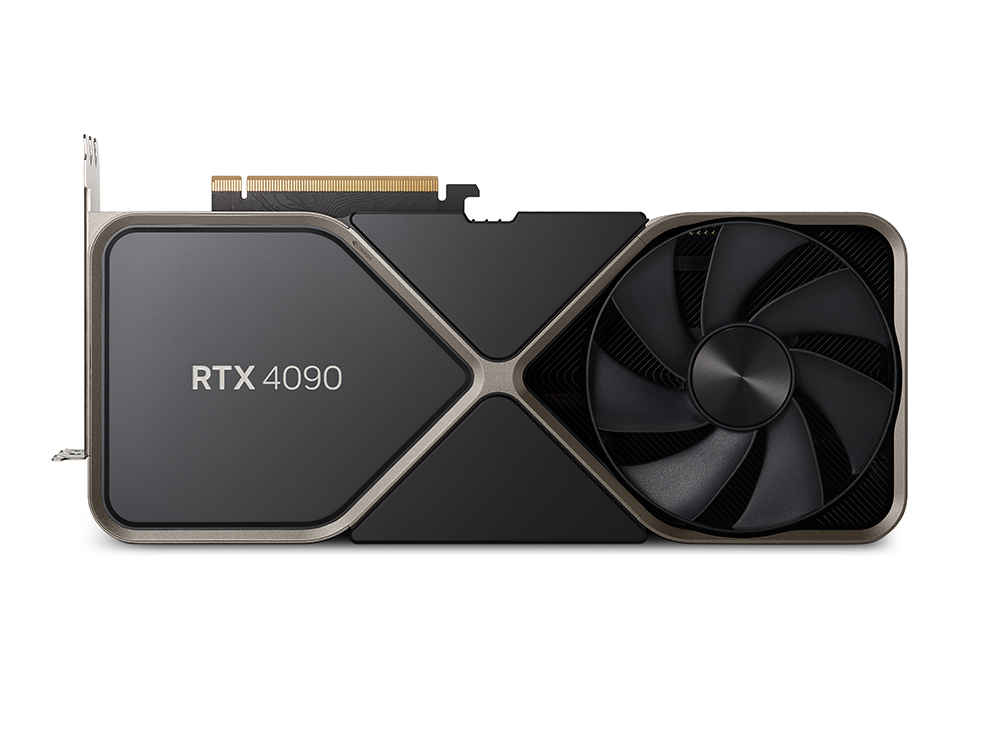
There are two fans on the RTX 4090, both of them arranged in the same push-pull configuration as the previous gen RTX flagship cards but with much more air flow. Apparently, they push about 80 cubic feet of air per minute which is enough to inflate 3.5 regulation basketballs every second when running at peak load. The fans are also a little larger and are fluid bearing fans instead of the ball bearing fans that the previous gen had.
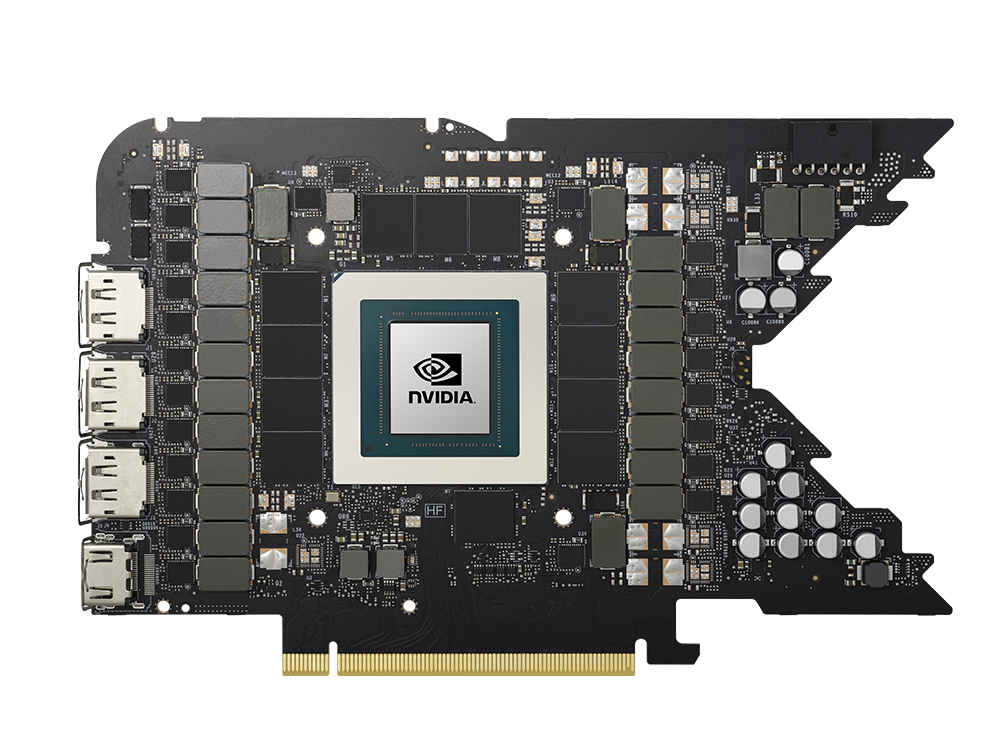
The power connector follows the new ATX 3.0 PCIe Gen 5 standard with 12 pins for the power and ground lines and an additional 4 pins which can talk to the SMPS for better synergy.
Lastly, the far-end of the GPU has a little metallic plate held in place with magnets which comes off to show two screw holes. These can be used to connect support rods since the card is very heavy.
Performance
We’ve only had a day with the card so we haven’t completed testing the unit completely. What you see below are the initial benchmark numbers that were run at 1080p. We’re still running 1440p and 4k benchmarks. The review and the verdict will be updated over the course of the next two days as we finish testing our entire benchmark suite.
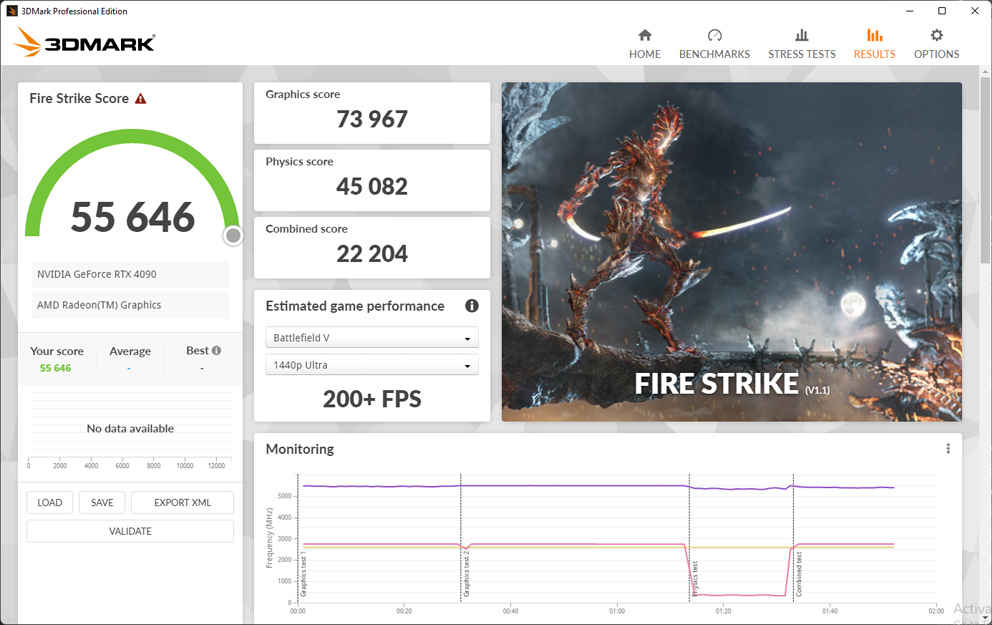
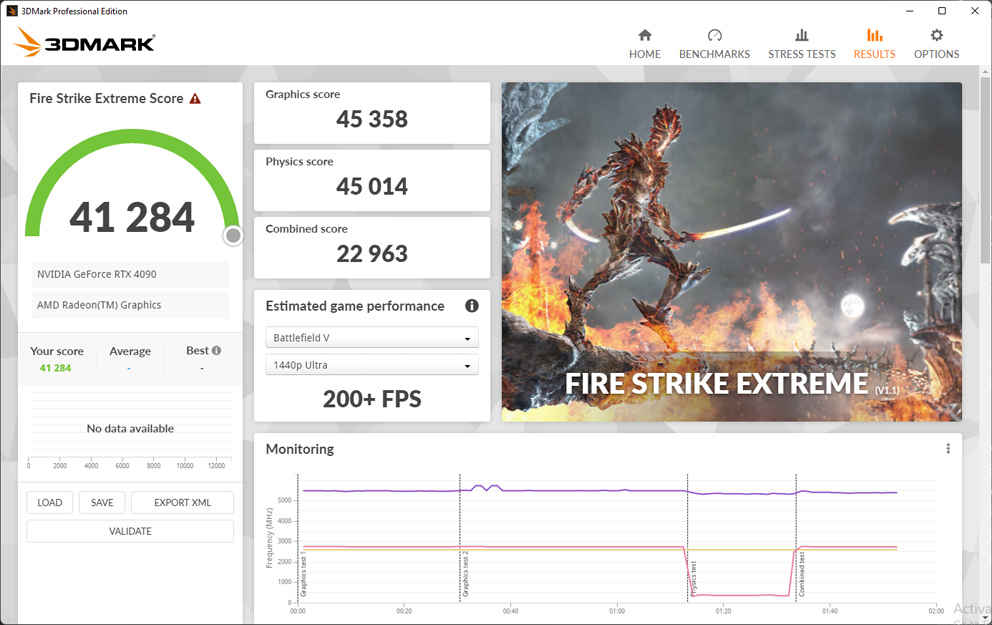
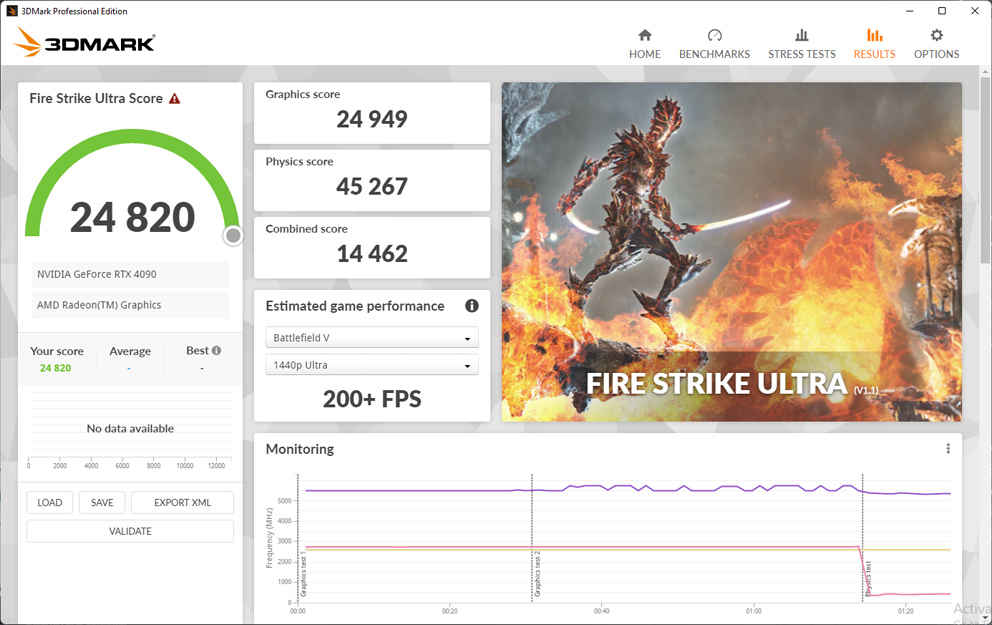
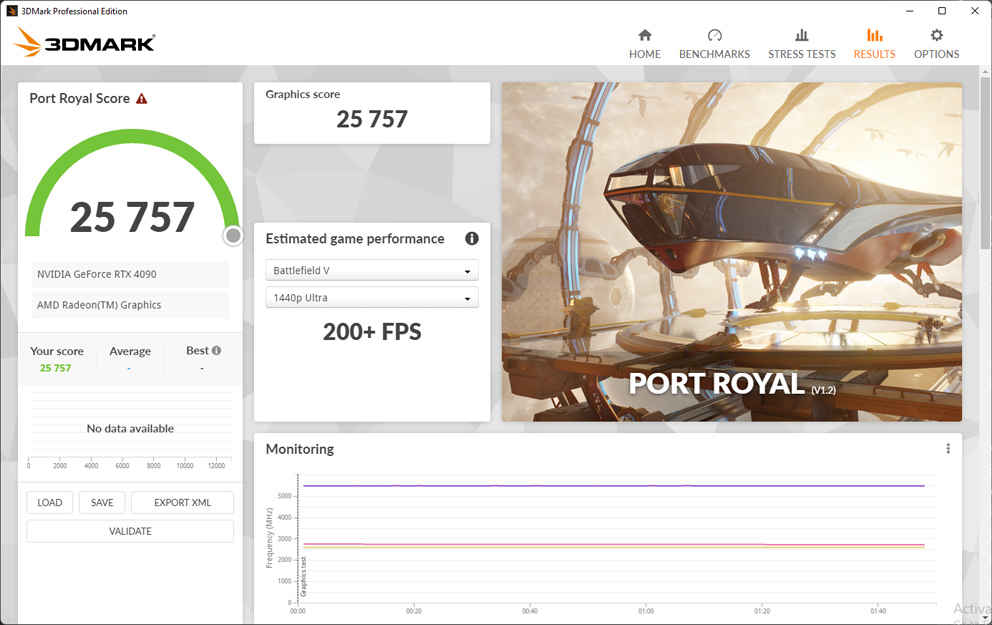
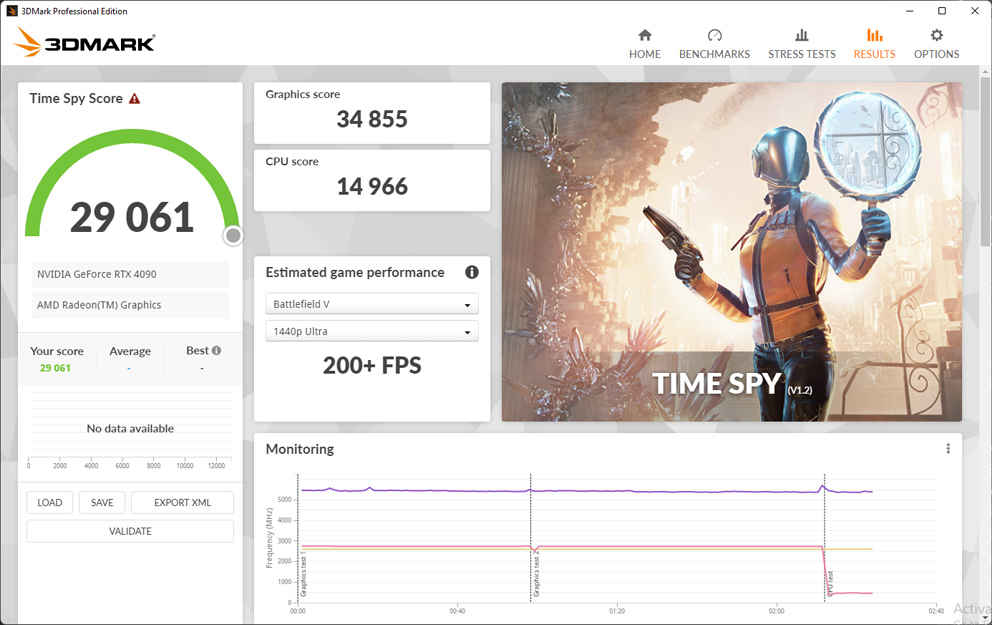
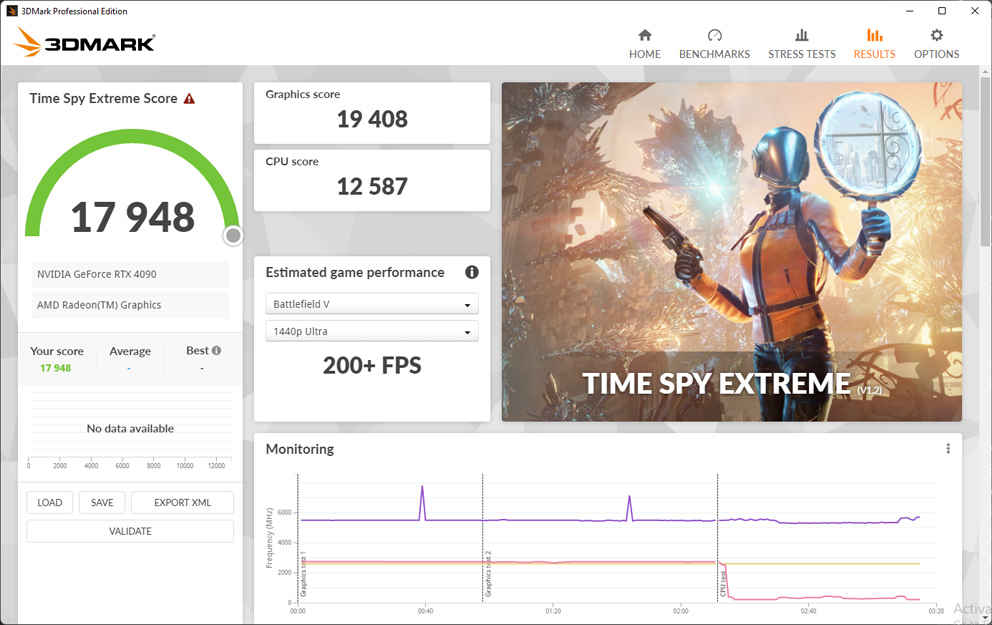
Gaming Performance
| Game @1080p | FPS |
| Assassin’s Creed Valhalla | 182 |
| Battlefield V | 213 |
| Borderlands 3 | 95 |
| CIV VI | 311 |
| Control | 231 |
| Cyberpunk 2077 | 135 |
| Doom Eternal | 483 |
| F1 2022 | 295 |
| HITMAN 3 | 131 |
| Metro Exodus | 240 |
| Cyberpunk 2077 | 135 |
| Cyberpunk 2077 RTX | 81 |
| Cyberpunk 2077 RTX + DLSS3 |
Verdict
The RTX 4090 takes one massive leap in performance from all the 1080p benchmarks that we have run thus far. We’re still reserving judgement regarding the 1440p and 4K gaming performance but from what we’ve seen thus far, it seems like the RTX 4090 will have a similarly impressive performance gap over the previous gen GPUs.
NVIDIA GeForce RTX 4090 Graphics Card Key Specs, Price and Launch Date
| Release Date: | |
| Market Status: | Launched |
Mithun Mohandas
Mithun Mohandas is an Indian technology journalist with 14 years of experience covering consumer technology. He is currently employed at Digit in the capacity of a Managing Editor. Mithun has a background in Computer Engineering and was an active member of the IEEE during his college days. He has a penchant for digging deep into unravelling what makes a device tick. If there's a transistor in it, Mithun's probably going to rip it apart till he finds it. At Digit, he covers processors, graphics cards, storage media, displays and networking devices aside from anything developer related. As an avid PC gamer, he prefers RTS and FPS titles, and can be quite competitive in a race to the finish line. He only gets consoles for the exclusives. He can be seen playing Valorant, World of Tanks, HITMAN and the occasional Age of Empires or being the voice behind hundreds of Digit videos. View Full Profile


